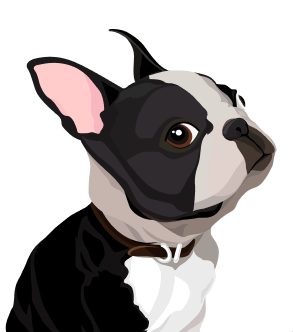Almost all puppies bite when they play with their owners. But puppy biting may be quite painful. So how to train a puppy not to bite when playing? Or do we actually need to train a puppy to stop play biting?
Let’s talk about a very important topic – using the hands for playing with a puppy.
For a long time, there was a theory in cynology which stated that we shouldn’t play with our dog using our hands because, presumably, it teaches the dog to bite us.
Behaviorists (specialists in dog behavior) as well as dog trainers, on the contrary say that it is necessary to play with a puppy using your hands and for a puppy to learn to bite our hands.
So does this mean that we don’t have to train our puppies not to bite?
Why does a puppy bite during a game?
When a puppy arrives in our home, they try to play with us in the same way they used to play with their brothers and sisters. How can a puppy play? Using their front legs and their teeth. Usually, puppies play incorporating a bit of biting, tag, and wrestling.Puppies’ bites are quite strong, but they simply have a higher pain tolerance than people do. What another puppy considers a game, people with low pain tolerance consider painful.
The puppy doesn’t know that, so they play with us and bite us not at all intending to cause us pain or discomfort but to simply play.
If we stop playing and prohibit our puppy from playing with our hands, then the puppy will never get any feedback. They won’t understand the strength of their clenched jaws, so that they can play with us while not biting, hurting, or breaking our skin.
There is a general sentiment that if a puppy doesn’t live through this experience, they won’t possess the understanding that a human is a different species that may be bitten in a different way, closing the jaws with a different force.
We ourselves thus create the risk that in the moment our dog doesn’t like something (if we haven’t trained it to handle such procedures as cutting claws), the dog becomes afraid. If they don’t know just how much strength to apply to show a human that they are uncomfortable, they will bite really hard. We will then talk about the problem of aggression towards people, and we will have to solve this problem.
If we play with the puppy with our hands from their early days, when the puppy bites our hands a bit it won’t get too excited and puncture our skin. We can then accept such games and continue playing.

How to teach the puppy not to bite while playing?
If the puppy plays carefully, bites gently and not painfully, we can continue such games. If the puppy bites us a little too hard, we mark this action, explain it, for example, we can start using the marker “Painful” and stop the game.
In this case, if the puppy stops biting us upon hearing “Painful” and listens to us and continues playing in a gentler way, we go on with the game. We say “good” or “perfect” and continue playing using our hands.
If after hearing “Painful” the puppy ignores us and continues biting, we stop the game, take a time-out, take the puppy to a different room, and close the door for 5-7 seconds. In doing this we take from the puppy something that had been a source of pleasure for them until the moment they bit us too hard.
Of course, the puppy won’t be able to understand this pattern after just a couple of times, but if we regularly play hand games, the puppy will understand that if they bite too hard, the game stops. They will thus learn to control themselves and their jaw-clenching power.
In the end, we will get a dog that in the moments when they feel fear or discomfort, show it to us by simply taking our hand in their teeth and signaling to us that they don’t feel comfortable. It will be a sign for us that we have to work on this situation so that the dog isn’t afraid of things like claw-trimming. At least we are not at risk of being bitten by our dog.
Moreover, if we’re talking about problematic dog behaviors, such as fears, noise phobias, or aggression towards other animals, we can work on these problems effectively playing games with toys and definitely our hands.
Sometimes it can happen that we’re walking the dog outside, and they have a reaction to a sound. We might not have any treats or toys with us. For these situations, we need to form our puppy’s social motivation, and their ability to play with our hands. In such a problematic situation, when we have nothing at hand (no treats, no toys) to reinforce the correct behavior of our puppy, we can do it using hand games that the puppy already knows. Luckily, hands are something we always have with us.
